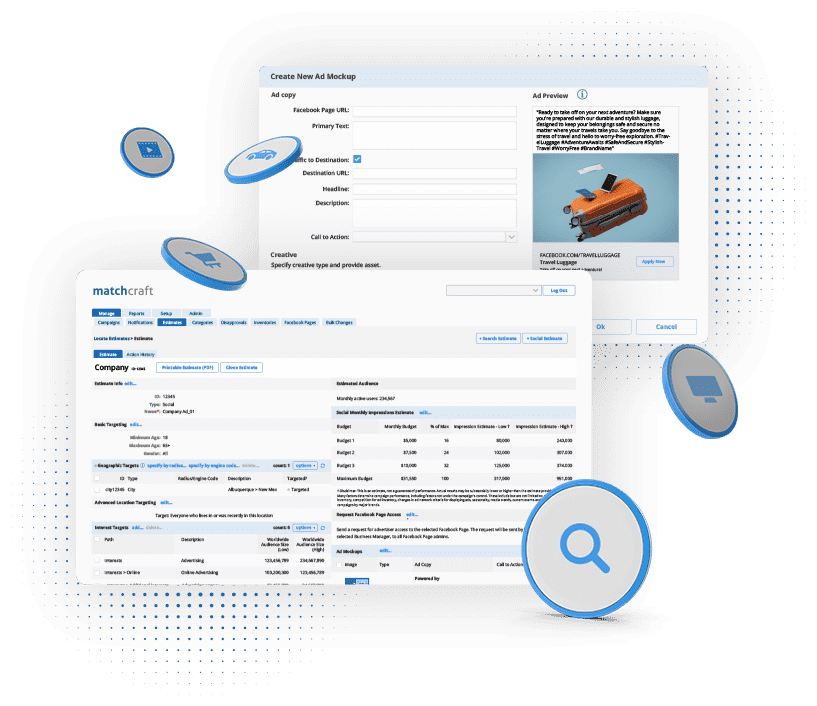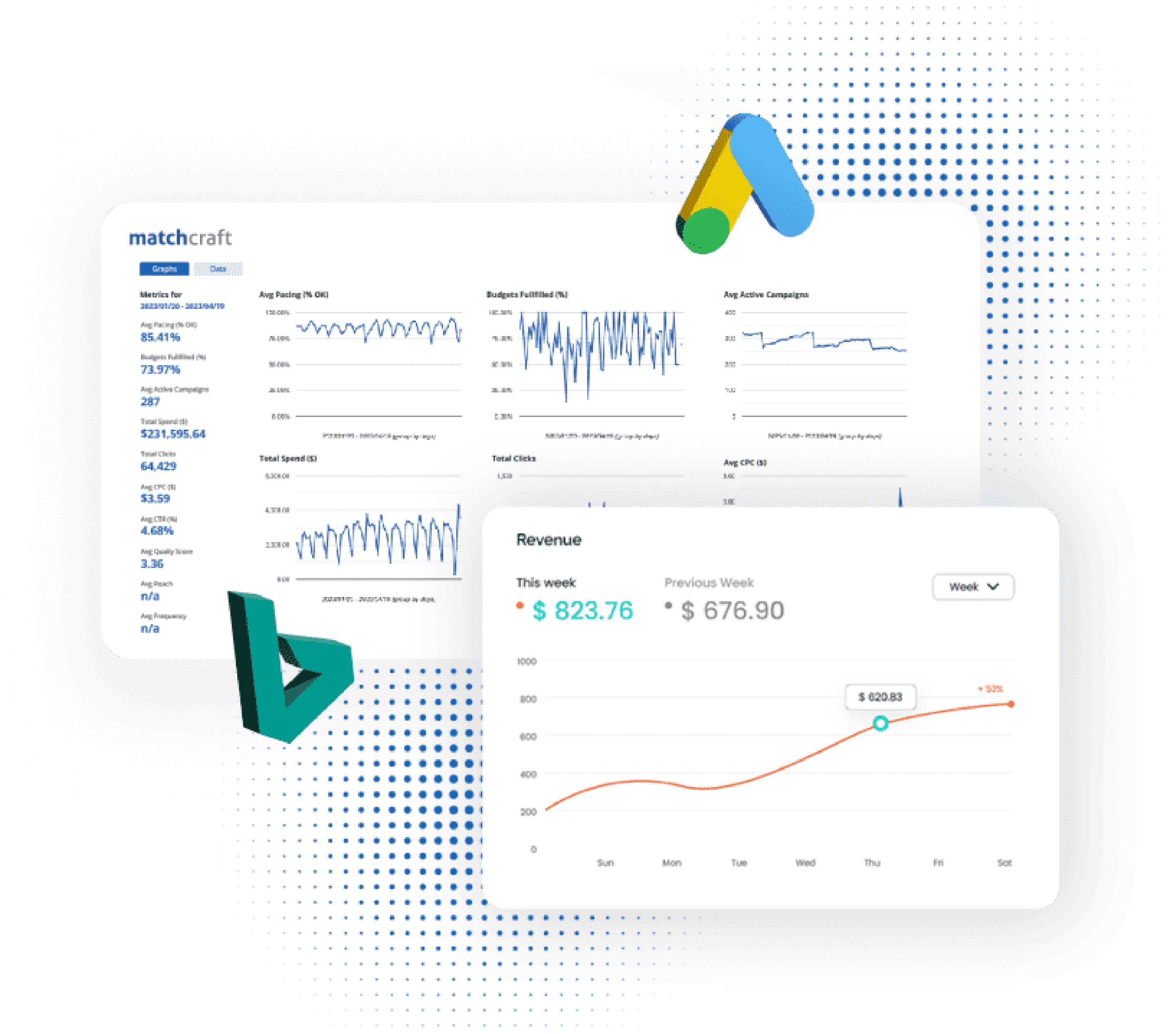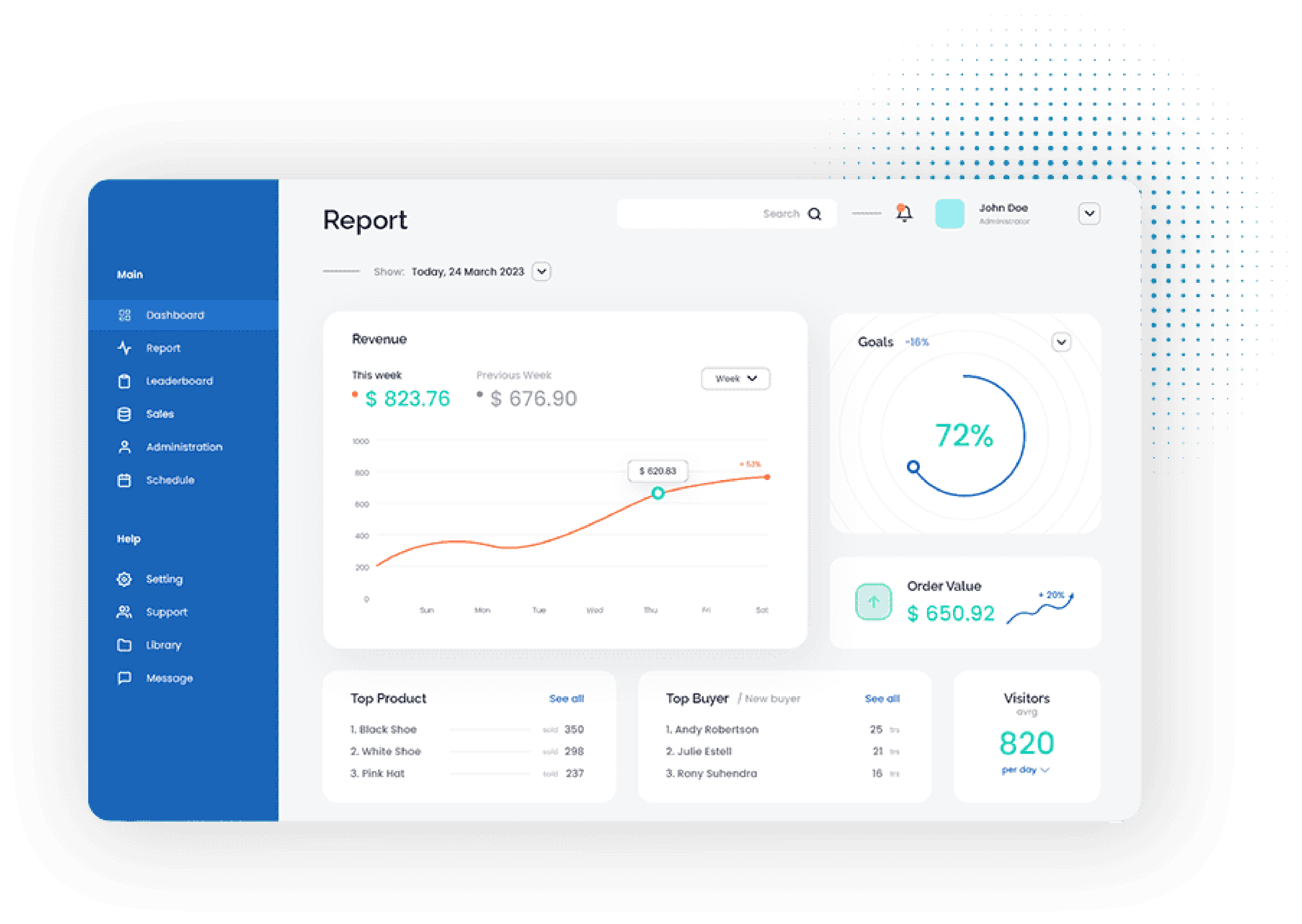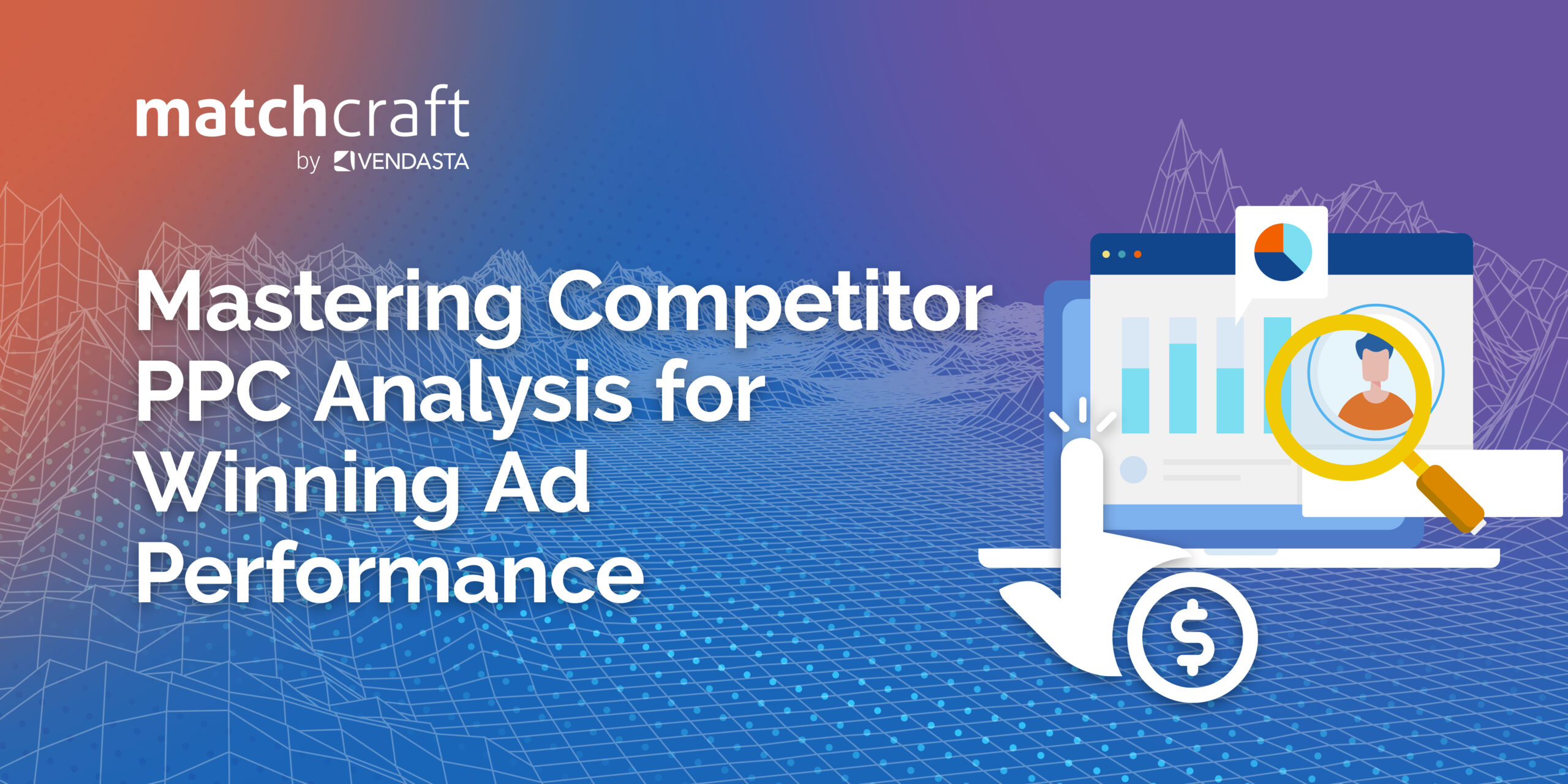Competitor PPC analysis is a vital strategy for businesses striving to outshine their competitors in digital marketing. By closely examining competitor tactics, companies can uncover valuable insights to enhance their own paid search campaigns. Without a deep understanding of competitor strategies, staying competitive and maximizing ad performance becomes a daunting challenge.
PPC advertising presents a myriad of challenges. From skyrocketing cost per click (CPC) to dwindling click-through rates (CTR), marketers often struggle to maintain their campaign’s efficiency. However, by diving deep into competitor PPC research, you can uncover valuable insights that drive more effective bidding strategies, optimize ad copy, and improve overall conversion rates.
To stay competitive in PPC campaigns, it’s essential to continuously monitor and analyze your competitors’ strategies. This article will walk you through the essentials of competitive PPC analysis, offering practical strategies to help you outmaneuver your competition. Leveraging the power of MatchCraft’s tools, we’ll explore how to gain actionable insights that propel your PPC campaigns to success.
Understanding Competitor PPC Analysis
Competitor PPC analysis is a strategic approach that allows marketing agencies to understand how their competitors are performing in paid search campaigns. By analyzing competitors’ keywords, ad copies, bidding strategies, and overall ad performance, agencies can gain a competitive edge. This analysis helps in uncovering opportunities to enhance their own campaigns by identifying gaps and areas for improvement.
Conducting a thorough competitor PPC analysis offers several key advantages that can significantly enhance your advertising efforts.
1. Identifying Optimal Keywords:
-
- Targeted Audience Reach: By analyzing the keywords your competitors are targeting, you can identify high-performing keywords that are more likely to attract your desired audience. This ensures that your ads appear to users who are most interested in your products or services, leading to higher engagement and conversions.
- Competitive Edge: Discovering keywords that your competitors might have overlooked or underutilized allows you to capture untapped market segments, providing a competitive advantage.
- Avoiding High-Cost Keywords: Competitor PPC analysis helps you identify keywords with high cost per click (CPC) that may not deliver sufficient ROI, allowing you to focus on more cost-effective alternatives.
2. Improving Ad Messaging:
-
-
- Refining Ad Copy: By examining the ad copy used by your competitors, you can gain insights into what resonates with your shared audience. This allows you to refine your messaging, making it more compelling and relevant.
- Enhanced Click-Through Rates (CTR): A deeper understanding of competitor ad strategies enables you to craft ads that stand out, improving your CTR and increasing the likelihood that users will click on your ads over those of your competitors.
- Tailored Call-to-Actions (CTAs): Analyzing competitor CTAs helps you create more effective and persuasive CTAs in your ads, which can drive higher engagement and encourage potential customers to take action.
-
3. Efficient Ad Spend:
-
- Budget Optimization: Understanding how your competitors allocate their PPC budgets provides valuable insights into how you can optimize your ad spend. Implementing proven pricing strategies for PPC agencies can help you maximize profitability while maintaining competitive ad placements. By focusing on high-performing keywords and avoiding areas where competitors are overspending, you can reduce wasted costs.
- Maximizing ROI: Efficient ad spending is not just about cutting costs—it’s about maximizing the return on investment (ROI) for every dollar spent. Competitor analysis helps you allocate your budget to the most effective strategies, ensuring better results.
- Strategic Bidding: By monitoring your competitors’ bidding strategies, you can adjust your bids to maintain a competitive position without overspending. This strategic approach helps you win valuable ad placements at the lowest possible cost.
4. Gaining Insights into Competitor Strategies:
-
- Identifying Trends: PPC competitor analysis allows you to spot emerging trends in the market by observing shifts in your competitors’ keyword choices, ad copy, and landing page strategies.
- Adapting to Market Changes: As your competitors evolve their PPC strategies, you can quickly analyze their new approaches, ensuring that your campaigns remain relevant and effective in a changing market.
- Benchmarking Performance: Regular competitor analysis provides a benchmark against which you can measure your PPC performance, helping you identify areas for improvement and growth.
By leveraging these advantages, competitor PPC analysis becomes a powerful tool for optimizing your campaigns, improving ad effectiveness, and maximizing your overall marketing performance.

MatchCraft’s PPC Platform
With PPC automation and optimization solutions, you can automate the most time-consuming aspects of PPC management, allowing for greater focus on strategy. This is where MatchCraft becomes an indispensable ally. As a leading provider of PPC automation and optimization solutions, MatchCraft offers tools that streamline the process of competitive PPC analysis. Their platform enables agencies to manage their PPC campaigns effectively, from identifying valuable keywords to optimizing bids, ultimately driving superior results.
How to Identify Your PPC Competitors?
Identifying your PPC competitors is the first step in mastering PPC competitor analysis. Here’s how you can do it effectively:
- Keyword Research: Start by using keyword research tools to discover which businesses are bidding on the same keywords as you. This step is crucial for understanding who your clients’ direct competitors are in the digital advertising space.
- SERP Analysis: Analyzing the Search Engine Results Page (SERP) for your target keywords helps you see which competitors are consistently ranking. This insight allows you to understand the competitive landscape and tailor your strategies accordingly.
MatchCraft simplifies this process with its powerful keyword tools. These tools enable agencies to identify competitors quickly and efficiently, providing data-driven insights that inform your bidding strategies and ad copy development. - Types of Competitors: It’s essential to differentiate between the types of competitors you might face:
- Direct Competitors: These are businesses offering the same products or services as you, targeting the same audience.
- Indirect Competitors: These companies offer different products but target the same audience with overlapping interests.
- Other Competitors: This category includes businesses that may not directly compete with your offerings but are vying for the same online visibility and impression share.
By understanding these competitor types, you can tailor your PPC Competitor research to focus on the most relevant players in your market.
Tools for Competitor PPC Analysis
Mastering competitor PPC is essential for staying ahead in digital marketing, as it reveals critical insights into your competitors’ strategies. The MatchCraft Platform offers a suite of integrated tools designed to provide comprehensive insights, helping agencies streamline their competitive PPC analysis efforts. Below are some key tools available through MatchCraft that are essential for effective competitor analysis:
1. Keyword Spy Tool
-
- Primary Function: The Keyword Spy Tool allows you to identify the keywords your competitors are bidding on, providing valuable insights into their targeting strategies.
- Key Feature: It offers a comprehensive view of the top-performing keywords in your niche, helping you discover untapped opportunities.
- Benefit: Marketing agencies can leverage this tool to refine their keyword targeting strategies, ensuring their client’s ads reach the right audience.
2. Ad Performance Tracker
-
- Primary Function: This tool monitors and analyzes the performance of your competitors’ ads, including metrics like click-through rate (CTR), conversion rates, and impression share.
- Key Feature: It provides real-time data on ad performance, enabling you to adjust your campaigns dynamically.
- Benefit: By understanding which ads are resonating with the audience, agencies can craft more effective ad copy and optimize their clients’ PPC campaigns.
3. Landing Page Analyzer
-
- Primary Function: The Landing Page Analyzer evaluates the effectiveness of your competitors’ landing pages, focusing on elements such as keyword usage, design, and user experience.
- Key Feature: It offers insights into what makes certain landing pages convert better, helping you improve your landing pages.
- Benefit: This tool enables agencies to enhance their clients’ landing page optimization efforts, leading to higher conversion rates and better ROI.
4. Display Ad Monitor
-
- Primary Function: The Display Ad Monitor tracks your competitors’ display ads across the web, providing a clear picture of their creative strategies and targeting methods.
- Key Feature: It reveals trends in display advertising, allowing you to stay ahead of your competitors.
- Benefit: Agencies can use this tool to develop more effective display ad campaigns for their clients, increasing visibility and engagement.
5. Competitor Website Auditor
-
- Primary Function: This tool assesses the quality of your competitors’ websites, analyzing factors like load times, mobile-friendliness, and overall user experience.
- Key Feature: It highlights areas where your competitors’ websites excel or fall short, offering actionable insights for improvement.
- Benefit: By benchmarking against competitors, agencies can ensure their clients’ websites provide superior experiences, leading to better ad performance and customer satisfaction.
Pro Tip: By utilizing MatchCraft’s Estimator tool, you can accurately gauge how your PPC strategies measure up against the competition.
These tools work seamlessly together within the MatchCraft Platform, offering a holistic view of your competitors’ strategies. By integrating data from various sources, the platform provides comprehensive insights that help agencies make informed decisions and refine their PPC campaigns.

MatchCraft’s PPC Campaign Automation
The debate between PPC automation vs outsourcing often comes down to the balance between control and scalability. Moreover, the MatchCraft Platform simplifies the use of these tools for agencies managing multiple client campaigns. Its user-friendly interface and automated processes allow agencies to efficiently monitor and adjust campaigns across various clients, ensuring consistent and optimized performance.
How to Conduct a Competitor PPC Analysis?
Conducting a thorough competitor PPC analysis involves several key steps. Here’s a step-by-step guide to help you navigate the process:
1. Find Competitors’ PPC Keywords
-
- Process: Use keyword research tools to identify the top keywords your competitors are bidding on. This step is essential for understanding where your competitors are focusing their efforts.
- MatchCraft Solution: The Keyword Spy Tool within the MatchCraft Platform automates this process, providing a clear list of high-performing competitor keywords.
2. Analyze Landing Pages
-
- Process: Evaluate your competitors’ landing pages to see how they incorporate keywords and design elements. Pay attention to how they guide users through the conversion process.
- MatchCraft Solution: The Landing Page Analyzer can automate the evaluation, offering insights into what makes certain landing pages successful.
3. Assess Website Quality
-
- Process: Compare the functionality, load times, and user experience of your competitors’ websites. A well-optimized website is crucial for the success of PPC campaigns.
- MatchCraft Solution: The Competitor Website Auditor assesses these factors, providing actionable recommendations to improve your website’s performance.
4. Track Display Ads
-
- Process: Monitor your competitors’ display ads to gain insights into their creative strategies, targeting, and messaging.
- MatchCraft Solution: The Display Ad Monitor tracks and analyzes these ads, allowing you to adapt and optimize your display advertising efforts.
Each step in this guide is made more efficient and effective with the MatchCraft Platform, which automates many of the tasks involved in competitive PPC analysis. Investing in PPC campaign management services can save time and ensure your campaigns are consistently optimized for peak performance. By leveraging these tools, marketing agencies can enhance their analysis process, offering better results for their clients while saving time and resources.
Analyzing Competitor Data
When conducting a competitor PPC analysis, it’s essential to focus on key data points that can provide insights into your competitors’ strategies and performance. Here’s a breakdown of the critical data points to analyze:
1. Keyword Performance
-
- Data Points: Analyze the search volume, cost per click (CPC), and competition level for each keyword your competitors are targeting. Understanding which keywords are driving traffic to your competitors’ sites can help you refine your keyword targeting strategy.
- MatchCraft Features: MatchCraft’s Keyword Spy Tool offers detailed analytics on keyword performance, including metrics like search volume and CPC. This allows you to identify high-value keywords that your competitors are leveraging, helping you stay competitive.
2. Ad Copy and CTAs
-
- Data Points: Evaluate the effectiveness of your competitor’s ad copy and calls to action (CTAs). Look for elements that resonate with the target audience, such as compelling headlines, value propositions, and persuasive language.
- MatchCraft Features: The Ad Performance Tracker within the MatchCraft Platform provides insights into the success of your competitors’ ad copy and CTAs, allowing you to adapt your messaging to improve ad performance and click-through rates (CTR).
3. Landing Page Experience
-
- Data Points: Assess the relevance and effectiveness of your competitors’ landing pages. Key factors to consider include the alignment of the landing page with the ad copy, the clarity of the value proposition, and the overall user experience.
- MatchCraft Features: The Landing Page Analyzer tool helps you evaluate the user experience on competitors’ landing pages, offering insights on how to optimize your own pages to increase conversion rates.
4. Conversion Funnels
-
- Data Points: Study how your competitors convert traffic into sales by analyzing their conversion funnels. This includes understanding the steps they take to nurture leads from the initial click to the final purchase.
- MatchCraft Features: With MatchCraft’s analytics tools, you can gain deeper insights into competitors’ conversion funnels, identifying tactics that can be applied or improved upon in your campaigns.
By using MatchCraft’s advanced analytics tools, you can dive deeper into these data points, gaining a clearer understanding of your competitors’ strategies and identifying opportunities for improvement.
Developing a Strategy Based on Analysis
Once you’ve gathered and analyzed competitor data, the next step is to develop a strategy that gives you a competitive edge. Here’s how you can translate your analysis into actionable strategies:
1. Keyword Strategy
-
- Approach: Optimize your keyword lists based on the findings from your competitor PPC analysis. Focus on high-performing keywords that offer a balance of search volume and manageable CPC. Consider targeting long-tail keywords that your competitors may have overlooked.
- MatchCraft Implementation: MatchCraft’s Keyword Spy Tool allows you to refine your keyword lists efficiently. By identifying gaps in your competitors’ keyword strategies, you can focus on high-potential keywords that drive quality traffic.
2. Ad Copy Improvements
-
- Approach: Adjust your ad copy to stand out from competitors. Incorporate elements that have proven effective in competitor ads, but add your unique value propositions to make your ads more compelling. Pay special attention to crafting powerful CTAs that encourage clicks and conversions.
- MatchCraft Implementation: With the Ad Performance Tracker, you can continuously monitor the effectiveness of your ad copy, making real-time adjustments to improve ad performance and click-through rates (CTR).
3. Landing Page Optimization
-
- Approach: Enhance your landing pages to provide a superior user experience compared to your competitors. Focus on clear messaging, fast load times, and a seamless flow from ad click to conversion. Ensure that your landing pages are highly relevant to the keywords and ad copy, increasing the likelihood of conversion.
- MatchCraft Implementation: The Landing Page Analyzer within the MatchCraft Platform helps you identify areas for improvement on your landing pages, ensuring they are optimized for maximum impact and better conversion rates.
By leveraging MatchCraft’s tools, you can effectively implement these strategies, ensuring that your PPC campaigns not only compete with but outperform your competitors. The platform’s ability to automate and streamline these processes makes it easier for agencies to manage and optimize campaigns across multiple clients, saving time and resources while delivering superior results.
Continuous Monitoring and PPC Strategy Adjustment
To maintain a competitive edge in PPC advertising, continuous monitoring and adjustment of your strategies are crucial. Competitor landscapes and market dynamics are constantly evolving, making it essential to regularly analyze and tweak your PPC campaigns to ensure sustained success.
Importance of Ongoing Analysis
The digital marketing environment is highly dynamic, with competitors frequently updating their strategies, launching new campaigns, and adjusting their bids. Without ongoing analysis, your PPC efforts could quickly fall behind, leading to wasted ad spend and diminished ad performance.
- Stay Ahead of Competitors: Regular competitor analysis allows you to stay informed about changes in your competitors’ strategies, enabling you to respond promptly with adjustments to your campaigns.
- Adapt to Market Changes: As market conditions shift, such as changes in consumer behavior or seasonal trends, ongoing analysis ensures your campaigns remain relevant and effective.
- Optimize Ad Spend: By continuously monitoring competitor activities, you can identify opportunities to optimize your bidding strategies and allocate your budget more efficiently, maximizing ROI.
Tools for Continuous Monitoring
To effectively monitor your competitors on an ongoing basis, you’ll need reliable tools that provide real-time data and insights. Here are some recommended tools and methods:
1. Real-Time Keyword Monitoring
-
- Purpose: Track the performance of keywords your clients’ competitors are bidding on in real time, allowing you to adjust your bids and keyword lists as needed.
- Tool: MatchCraft’s Keyword Spy Tool provides continuous updates on competitor keyword performance, ensuring you can swiftly respond to changes in the competitive landscape.
2. Ad Performance Alerts
-
- Purpose: Receive notifications about significant changes in your clients’ competitor’s ad performance, such as spikes in CTR or conversions.
- Tool: Ad Performance Tracker can be set up to alert you when your competitors’ ads start outperforming or underperforming, prompting timely adjustments to your own ad copy or bidding strategies.
3. Landing Page Performance Reports
-
- Purpose: Regularly assess the effectiveness of competitors’ landing pages to ensure your pages continue to offer a superior user experience.
- Tool: The Landing Page Analyzer generates ongoing reports on competitors’ landing page metrics, allowing you to keep your pages optimized and competitive.
4. Display Ad Monitoring
-
- Purpose: Continuously track competitors’ display ads across various networks to spot new trends and creative strategies.
- Tool: Display Ad Monitor within the MatchCraft Platform helps you stay informed about the latest display ads your clients’ competitors are using, ensuring your campaigns remain fresh and engaging.
MatchCraft Automation
One of the key advantages of using the MatchCraft Platform is its ability to automate many aspects of continuous monitoring and strategy adjustment. Here’s how MatchCraft simplifies the process:
- Automated Alerts and Reports: MatchCraft can automatically generate alerts and reports based on predefined criteria, such as significant shifts in keyword performance or changes in competitor ad strategies. This ensures you’re always informed without the need for manual monitoring.

MatchCraft’s Report Dashboard
- Dynamic Bidding Adjustments: The platform can automatically adjust your bidding strategies in response to real-time data, helping you maintain optimal ad positioning without constant manual intervention.
- Integrated Insights: All tools within the MatchCraft Platform work together seamlessly, providing a unified dashboard where you can view competitor data, monitor trends, and make adjustments across all your campaigns from one place.
By leveraging MatchCraft’s automation capabilities, agencies can ensure that their PPC campaigns remain competitive and effective over the long term. Continuous monitoring, combined with automated adjustments, allows you to maximize performance, optimize ad spend, and ultimately drive better results for your clients.
Conclusion
Understanding the complexities of competitor PPC analysis is no longer optional—it’s essential. With the right strategies and tools, businesses can significantly enhance their ad performance by dissecting competitors’ tactics and identifying opportunities for improvement. However, this isn’t just about staying ahead; it’s about thriving in a crowded marketplace. By leveraging insights gained from competitive analysis, you can fine-tune your clients’ campaigns to drive better results and maximize ROI.
If you’re ready to take your clients’ PPC campaigns to the next level, don’t leave it to guesswork. Request a demo today and see how our advanced tools can provide you with a competitive edge.
